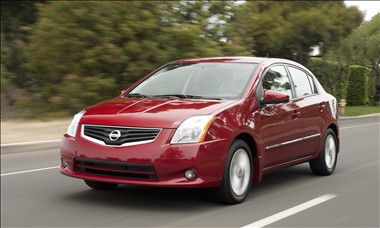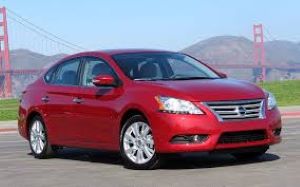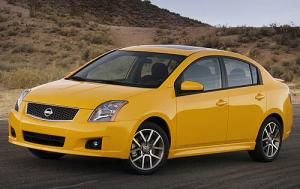In today's very high-priced used car market, many shoppers are now looking for "older" models that have aged well as a way to save significant dollars. And this puts an enormous importance on a particular model's history for reliability and longevity.

And with the overall popularity of the Nissan Sentra, many car buyers are taking a look at its older models. And by older, I'm generally referring to Sentras that are 10+ years old, which would mean those from its sixth and seventh generations, produced for the 2007 - 2019 model years, with a primary focus on the earlier models when it comes to the seventh generation (2013 - 2019).
So, how have these older Nissan Sentra models fared when it comes to reliability? Well, certainly not bad. But not quite outstanding either.
Overall, they've done pretty well, somewhat above-average, with many owners having satisfactory experiences involving mostly routine maintenance. But some owners have reported issues as well, and we will review those here.
History has proven that an older, well-maintained Sentra can be expected to last in the 150,000 - 200,000 mile range (average is about 150,000), before the most serious and costly repairs start kicking in. And there are documented cases of some going much further.
And one of the most important factors when it comes to their longevity is the "well-maintained" part, and those are the vehicles potential car buyers need to locate today.
While there will be more on possible mechanical problems to check for below, one area to be particularly mindful of is the Sentra's CVT (Continuously Variable Transmission). And while this has only been a sore spot for a minority of owners, it is something to be careful about.
And just to be on the safe side, I would recommend changing the transmission fluid every 25,000 miles, as opposed to the 50,000 - 60,000 recommended, or the roughly 100,000 typical for an automatic transmission.
So here, ...
- We'll do an overview of two earlier Nissan Sentra generations, specifically the sixth and seventh, covering the 2007 - 2019 model years.
- Then we'll list possible mechanical issues for these production runs that have been reported by owners so they can be checked before buying one today.
- And then we'll summarize the overall pros and cons of an older Sentra worth consideration for potential buyers.
Seventh Generation Nissan Sentra (2013 - 2019)

The seventh-gen Sentra showcased a more modern and sleek exterior design compared to its predecessors. It adopted Nissan's signature V-Motion grille, giving it a more aggressive and upscale appearance. The body lines were also more refined, contributing to its aerodynamic profile.
Inside, this Sentra was updated as well, with higher trim levels offering features such as leather upholstery, heated seats, and advanced infotainment systems. The overall interior design aimed to create a more comfortable and refined driving experience than its predecessor.
This version was available in several trim levels, with the base model S coming with respectable standard features such as air conditioning, power windows, and a basic infotainment system.
Moving up to the SV trim adds more convenience and comfort features, such as a touchscreen infotainment system, keyless entry, and upgraded interior materials.
Positioned as the sportier variant, the SR trim included sporty exterior styling elements, larger wheels, and additional tech features like smartphone integration and advanced driver assistance systems.
The SL trim level was the top-of-the-line option, offering the most luxurious features such as leather upholstery, premium audio systems, and advanced safety features.
You May Also Like:
The Easiest Car Negotiation Technique
Best Time To Buy And How To Negotiate
Best Used Cars For Reliability
In terms of performance, this Sentra aimed to enhance its driving dynamics and was equipped with a modest yet efficient engine, offering a balance of performance and fuel economy suitable for daily commuting.
Under the hood is a 1.8-Liter Inline-4, producing 130 to 140 horsepower and paired with either a manual transmission or a continuously variable transmission (CVT).
And in 2017, there was also a turbocharged Sentra variant aimed at those looking for additional athleticism, known as the Sentra SR Turbo. This model featured a more powerful 1.6-liter turbocharged inline-4 engine, delivering around 188 horsepower, significantly increasing performance.
2013 - 2019 Nissan Sentra Possible Mechanical Problems
This production run generally had a reputation for being a fairly reliable vehicle. However, like any car, it did have some owner-reported mechanical issues, which should therefore be included in an inspection prior to buying one today:
CVT (Continuously Variable Transmission) Issues: Similar to the earlier generation, and mentioned above, some owners reported problems with the CVT, including slipping, rough shifting, or premature failure.
In response, in 2018, Nissan issued a recall for 2012-2017 Sentra sedans equipped with CVT transmissions. They also extended the warranty on models with the CVT to 10 years/120,000 miles, whichever comes first.
Brake Problems: Some owners reported premature wear of brake pads and rotors, as well as issues with the brake pedal feeling spongy or vibrating during braking.
Electrical Problems: Electrical issues, such as malfunctioning power windows, door locks, or infotainment system glitches, were reported by some owners.
Air Conditioning System Failure: Problems with the air conditioning system, such as loss of cooling performance, unusual noises, or failure of the A/C compressor, were reported by some owners.
Engine Mounts Failure: Premature failure of engine mounts, leading to excessive engine vibration or noise, was reported by a minority of owners.
Steering Issues: Some owners experienced problems with the power steering system, such as a stiff or jerky steering feel, or loss of power steering assistance. These issues could be caused by a faulty power steering pump, steering rack, or electronic power steering system components.
Exhaust System Leaks: Premature rusting or corrosion of exhaust system components, including the muffler, catalytic converter, or exhaust pipes, was reported by some owners.
It's important to note that not all Nissan Sentras from the seventh generation experienced these problems, and many owners found their vehicles to be reliable.
Sixth Generation Nissan Sentra (2007 - 2012)

With the redesign in 2007, the Sentra looked a lot more like an Altima or Maxima, while some models can be found with more features than is normally expected in an economy car, including a keyless start and Bluetooth connectivity.
And thanks to a longer wheelbase, the cabin is roomy, with ample headroom and legroom for 6-footers.
This Sentra can be found in five models: 2.0, 2.0 S, 2.0 SL, SE-R and SE-R Spec V. All models except the performance-oriented Sentra SE-R are powered by a 2.0 liter inline-4 that produces 140 horsepower.
Under the hood of the SE-R is a 2.5 liter four that generates 177 horsepower, while the SE-R Spec V comes with a modified version of the 2.5 liter engine and pumps out 200 horsepower.
Older Sentras from this generation can be found with either a 6-speed manual transmission or a continuously variable transmission (CVT). The Spec V is 6-speed manual only.
In addition, there's also an "FE+" designation (standing for "Fuel Economy Plus") for all Sentra models except the SE-R trims. As the name implies, FE+ models get slightly better gas mileage performance.
The SE-R, particularly the Spec V version, provides impressive performance whether sprinting from a standstill to 60 mph in just 6.7 seconds or demonstrating outstanding grip in the corners. There's no question it offers a lot of performance for the dollar.
2007 - 2012 Nissan Sentra Possible Mechanical Problems
Although considered generally reliable, some mechanical issues were reported by owners and should therefore be included in a pre-purchase inspection:
CVT (Continuously Variable Transmission) Problems: Some owners reported issues with the CVT, including transmission slipping, jerking, or failing prematurely. These problems could lead to poor acceleration, harsh shifting, or complete transmission failure.
Nissan responded with a combination of warranty extensions, technical bulletins, and recalls.
Engine Mounts Failure: Premature failure of engine mounts was reported by some owners. Symptoms included excessive engine vibration or noise, especially during acceleration or when the vehicle was idling.
Steering Issues: Some owners reported problems with the power steering system caused by a faulty power steering pump, steering rack, or electronic power steering system components.
Brake Problems: Premature wear of brake pads and rotors was reported by some owners. Symptoms included squealing or grinding noises when braking, decreased braking performance, or pulsation in the brake pedal.
Electrical Problems: Various electrical issues were reported, including malfunctioning power windows, door locks, or interior lights. These problems could be caused by faulty wiring, switches, or electronic control modules.
Air Conditioning System Failure: Some owners experienced issues with the air conditioning system, such as loss of cooling performance, strange odors, or complete failure of the A/C compressor.
Exhaust System Leaks: Premature rusting or corrosion of the exhaust system components, including the muffler, catalytic converter, or exhaust pipes, was reported by some owners.
Overall Pros And Cons Of An Older Nissan Sentra
Older Nissan Sentra Pros
Affordability: Clearly, older Sentras generally have lower purchase prices compared to newer models, allowing buyers to save money upfront. However, this has to be weighed against an increased risk of repair costs going forward.
Depreciation: Older cars typically experience slower depreciation rates compared to new cars, thereby avoiding the steep depreciation that occurs during the first few years of ownership of newer cars, and reducing the overall ownership cost.
Lower Insurance Costs: Insurance premiums for older cars are generally lower than for newer models, potentially saving money on insurance premiums.
Reliability: These older Sentras, have a reputation for reliability when properly maintained. Buying a well-maintained older Sentra can provide dependable transportation at a lower cost.

Simplicity: Older cars often have simpler technology and fewer electronic components compared to newer models. This can mean lower repair and maintenance costs over time.
Fuel Efficiency: These Sentras were known for their fuel efficiency, which is a crucial factor for many compact car buyers. Its efficient engine options, along with aerodynamic design, helped deliver good fuel economy, making it cost-effective to run.
Spacious Interior: The interiors are generally roomy, especially for a compact car. Both front and rear passengers typically enjoy ample legroom and headroom, making it comfortable for long drives or for carrying passengers.
Smooth Ride: The Sentra offers a comfortable and smooth ride quality, absorbing bumps and road imperfections well. This contributes to a pleasant driving experience, especially during daily commuting or highway cruising.
Simple and Reliable Engines: Older Sentra models often came equipped with straightforward and reliable engine options. These engines were generally easy to maintain and offered good fuel efficiency, contributing to lower long-term ownership costs.
Cost-Effective Maintenance: Due to their simplicity and widespread availability of parts, maintaining and repairing older Sentra models can be relatively affordable compared to newer, more complex vehicles. DIY repairs may also be feasible for some owners, further reducing maintenance costs.
Older Nissan Sentra Cons
Safety Features: Older Sentra models may lack advanced safety features found in newer cars, such as advanced driver assistance systems and enhanced crash protection. This could compromise occupant safety in the event of a collision.
Potential Mechanical Issues: As cars age, they are more likely to develop mechanical issues such as engine or transmission problems, suspension wear, or electrical issues. Maintenance and repair costs could offset initial savings.
Fuel Efficiency: Older Sentra models may not be as fuel-efficient as newer ones due to advancements in engine technology and aerodynamics. This could result in higher fuel costs over time.
Outdated Technology: Older Sentras may lack modern infotainment systems, connectivity features, and convenience amenities found in newer models.
Outdated Interior: The interior design and materials of some older Sentras were criticized for feeling somewhat dated and cheap, especially when compared to newer competitors. Plastics and upholstery used in the cabin can feel lower-quality and less refined to some.
Mediocre Handling: While the Sentra offered a comfortable ride, its handling dynamics were often criticized for being uninspiring. It lacked the sporty and agile feel of some competitors, which could be a downside for drivers seeking a more engaging driving experience.
 By Josh Rosenberg
By Josh Rosenberg